Mead Acid production even in the presence of other PUFAs
-
When I say PUFA in this article, I'm referring mainly to omegas-6, as they are responsible for most of what is known as essential fatty acid deficiency(EFAD). Omegas-3 deficiency causes other effects, which I won't cover here.
On Mead Acid(MA)
That MA is produced in large quantities in a state of Linoleic(LA)/Arachidonic(ARA) deficiency is already known (The other post in which I talk about this and mention a few more things can be found here), but what is little known is that MA also has the ability to deplete other PUFAs by competition, either by "metabolic pathways" or structurally (taking the place of other PUFAs in membranes).
Below is a table showing the proportion of fatty acids in plasma phospholipids in diets with different Mead:Linoleic ratios
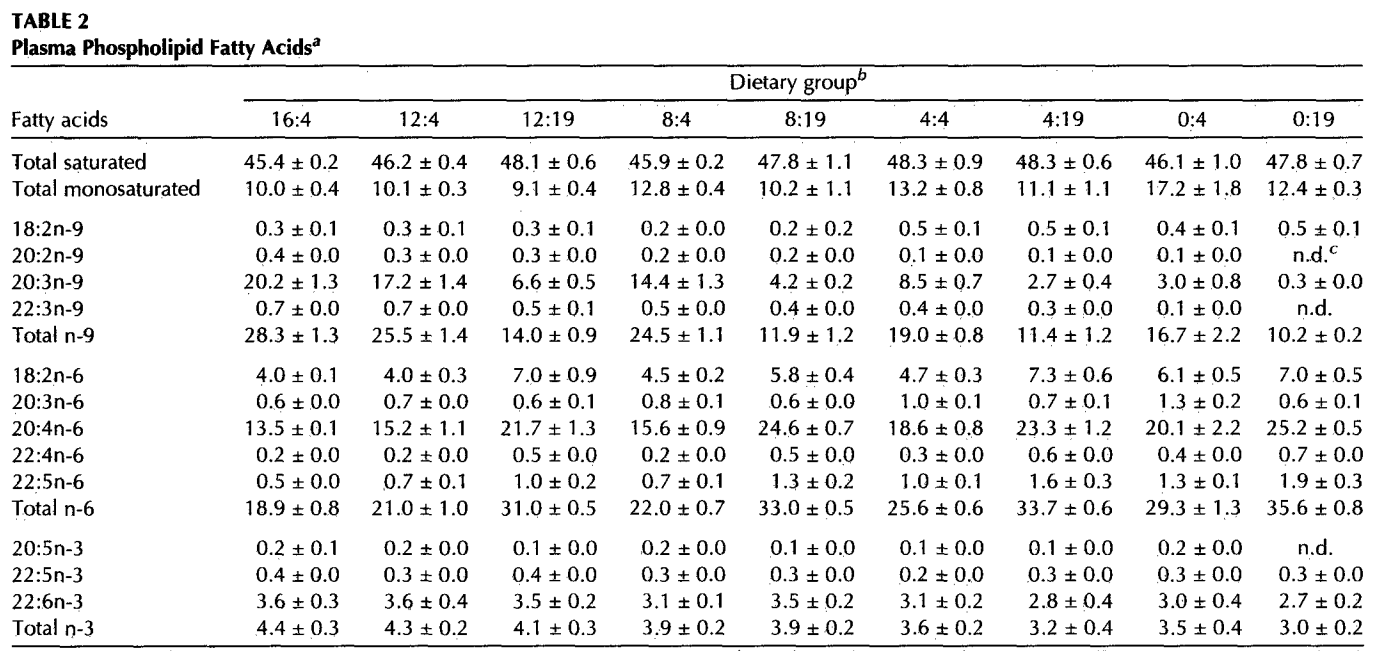
Regardless of the proportions, the presence of LA in the diet seems to be the determining factor in the minimum levels of LA/ARA in phospholipids, but that's not what matters here, what we can see is that the increase in the proportion of MA affects the levels of LA/ARA as well, clearly demonstrating a competition between these PUFAs for the same positions in the membrane. MA(20:3 ω-9) is a "substitute" for ARA(20:4 ω-6), so the effects will be more noticeable at the ARA level than LA.
The conclusion seems to be the same:

Nice to know, but if MA is produced in large quantities only in EFAD, what relevance does it have for us? It's not as if there's a significant external source of MA.
Indeed, but considering that MA is produced from Oleic Acid (OA), I've been thinking for some time about the possibility of manipulating levels through diet. In theory, if the LA:ALA ratio, which is usually much higher than 1, hinders the conversion of ALA (even though it has priority compared to LA) to EPA/DHA, the same would be possible with the OA:LA ratio, favoring OA. I always thought it curious that MA was produced from OA but most studies only induce EFAD with a fat-free diet or hydrogenated coconut oil.
Does consuming more OA increase MA production?
Apparently yes. Below is the difference between the levels of MA derivatives in a diet rich in LA vs rich in OA:
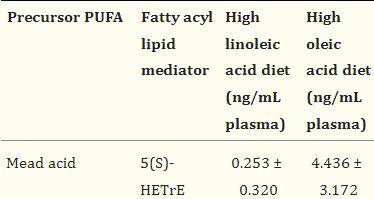
Unfortunately in this study I didn't find the information on how much OA was in the high LA diet so I could get a better idea, but in this other study there are more details:
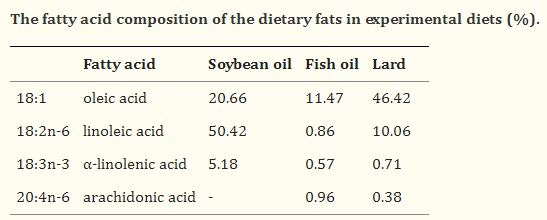
Influence of diets on MA(20:3 ω-9)
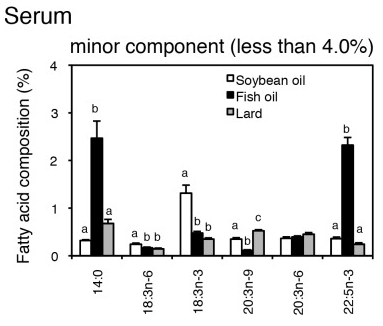
We saw before that the amount of LA is the biggest influence on MA limits, but take a look at the graph and compare it with the diets and their OA:LA ratios.- Soybean Oil: 0.4
- Fish Oil: 13.3
- Lard: 4.6
Although Fish Oil(omega-3 has the aggravating factor of reducing Δ-6 desaturase) has the best OA:LA ratio, the amount of MA is still less than that of Soybean oil with 50% LA and a ratio of 0.4! OA seems to increase MA regardless of LA.
Is the presence of OA/MA able to help deplete EFAs?
Apparently, not only is it able to help, but it happens much faster than a fat-free or coconut oil diet.
SF(OA=14.2%/LA=75.5%) - CO(OA=2.63%/LA=0.45%) - OA(OA=69%/LA=3.54%)
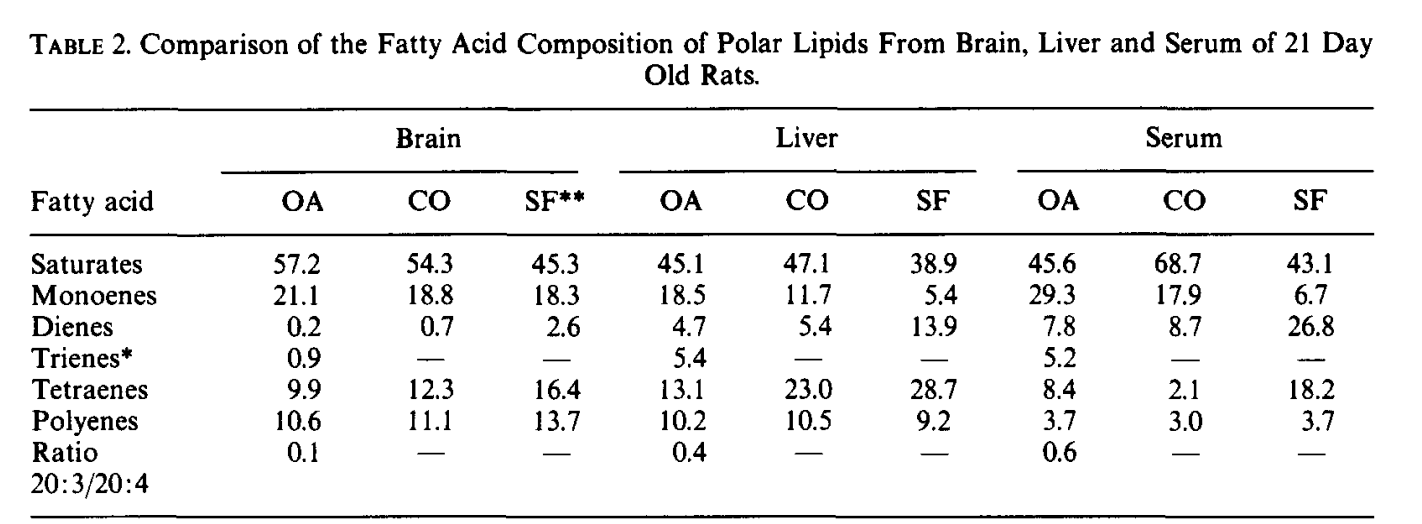
Trienes* = Mead Acid(20:3 ω-9)Within 21 days MA was found in the brain, liver and serum in the OA group, even though the diet with the lowest LA was CO.
After 90 days, the intensity of EFAD was greater in the OA group

Curiosity: Usually EFAD at these levels is enough to cause growth stunting, but apparently OA didn't have as much of this, at least in this study. Study with too little time to find out.
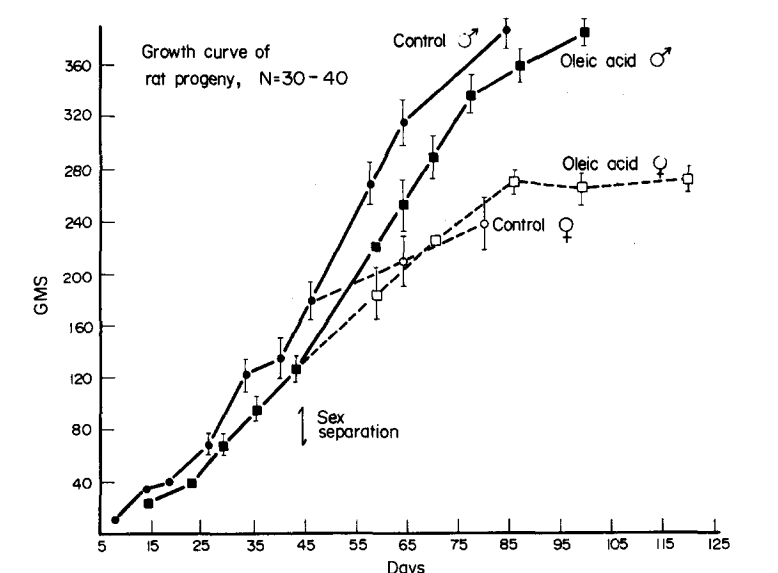
Other studies seem to confirm OA ability to increase MA independently of LA:
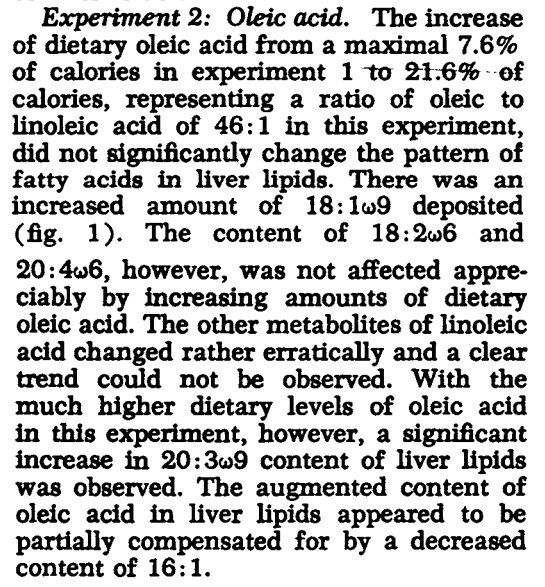
Others point to OA ability to interfere with LA levels:
Attention was thus focused on the possibility that oleic acid interfered with the normal utilization of some other component in coconut oil. As we were dealing with essential fatty acid deficiency symptoms, this component might be linoleic acid. Gas-liquid chromatographic analysis of coconut oil showed that it contained 1.5% of linoleic acid, furnishing about 20 mg. of linoleic acid per day per guinea pig. This amount, although small, can support almost normal growth without any deficiency symptoms as shown by feeding coconut oil alone. However, when comparatively large amounts of oleic acid are included in the diet, the animals no longer can utilize the small but significant amount of linoleic acid and deficiency symptoms are observed.
It may be possible that under these circumstances oleic acid competes with linoleic acid and acts as an inhibitor with some of the enzymes involved in arachidonic acid formation. If such is the case, metabolites of oleic acid would accumulate in the oleic acid-fed group. Eicosatrienoic acid, which is formed from oleic acid under conditions of fat deficiency, was found in the oleic acid-fed group and was absent in the other groups.
To produce MA, it seems that the amount of oleic matters in an "acute" way, and the limits and intensity with which it can increase seem to be defined by the OA:LA ratio at the moment.
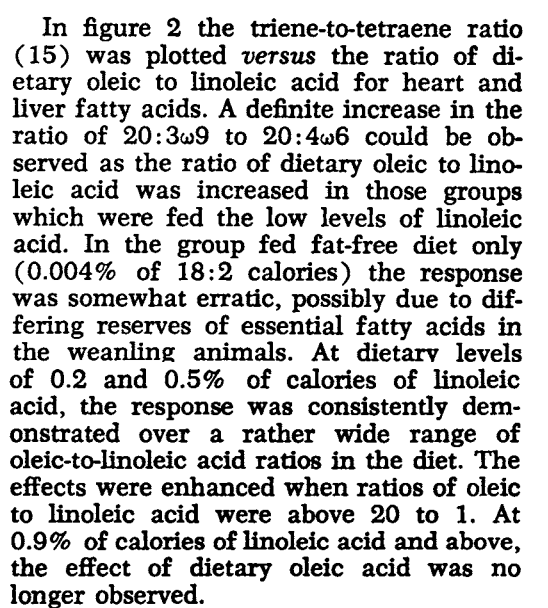
The way I see it, for those who strive to deplete PUFA, there's no reason why someone can't reach this EFAD status or can't accelerate this state to happen in less than 4 years. Considering depletion as something that happens in a linear way is the reason many peaters find it impossible outside of laboratory environments.

REFERENCES
Cleland, L. G., Neumann, M. A., Gibson, R. A., Hamazaki, T., Akimoto, K., & James, M. J. (1996). Effect of dietary n-9 eicosatrienoic acid on the fatty acid composition of plasma lipid fractions and tissue phospholipids. Lipids, 31(8), 829–837.
Nada Birkic, Toni Azar, Krishna Rao Maddipati, Zeljka Minic & Christian A. Reynolds. Excessive dietary linoleic acid promotes plasma accumulation of pronociceptive fatty acyl lipid mediators
Mizunoya, W., Iwamoto, Y., Shirouchi, B., Sato, M., Komiya, Y., Razin, F. R., … Ikeuchi, Y. (2013). Dietary Fat Influences the Expression of Contractile and Metabolic Genes in Rat Skeletal Muscle. PLoS ONE, 8(11), e80152.
Menon, N. K., & Dhopeshwarkar, G. A. (1981). Essential fatty acid deficiency and lipid metabolism of the developing brain. Progress in Lipid Research, 20, 129–134.
Lowry, R. R., & Tinsley, I. J. (1966). Oleic and Linoleic Acid Interaction in Polyunsaturated Fatty Acid Metabolism in the Rat. The Journal of Nutrition, 88(1), 26–32.
Mohrhauer, H., Rahm, J. J., Seufert, J., & Holman, R. T. (1967). Metabolism of Linoleic Acid in Relation to Dietary Monoenoic Fatty Acids in the Rat. The Journal of Nutrition, 91(4), 521–527.
-
Wow so some olive oil might be good after all
-
I don't see a problem with a little olive oil, but if you want to tip the scales to the "peaty side", macadamia is probably a better option due to the Oleic:Linoleic ratio.